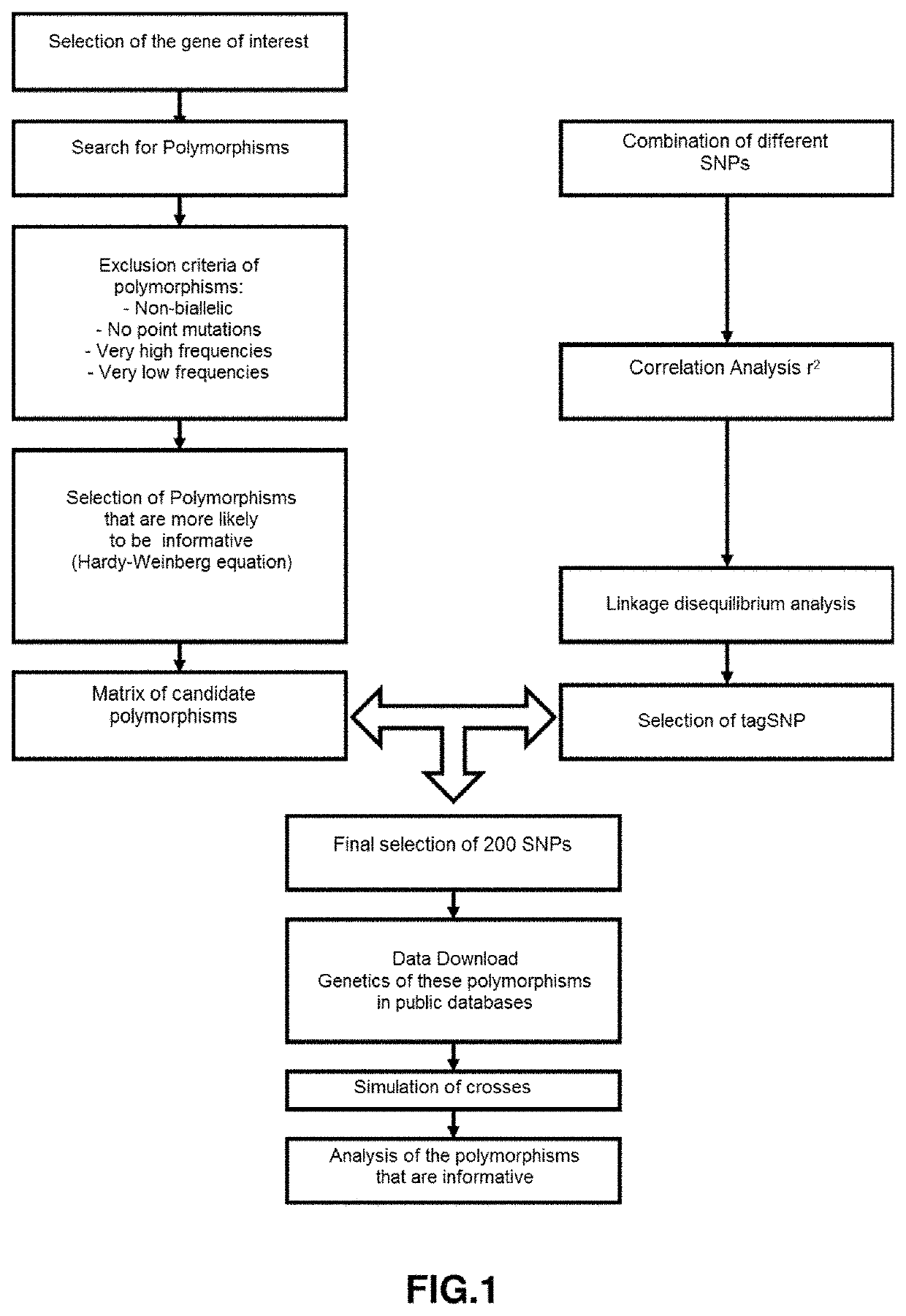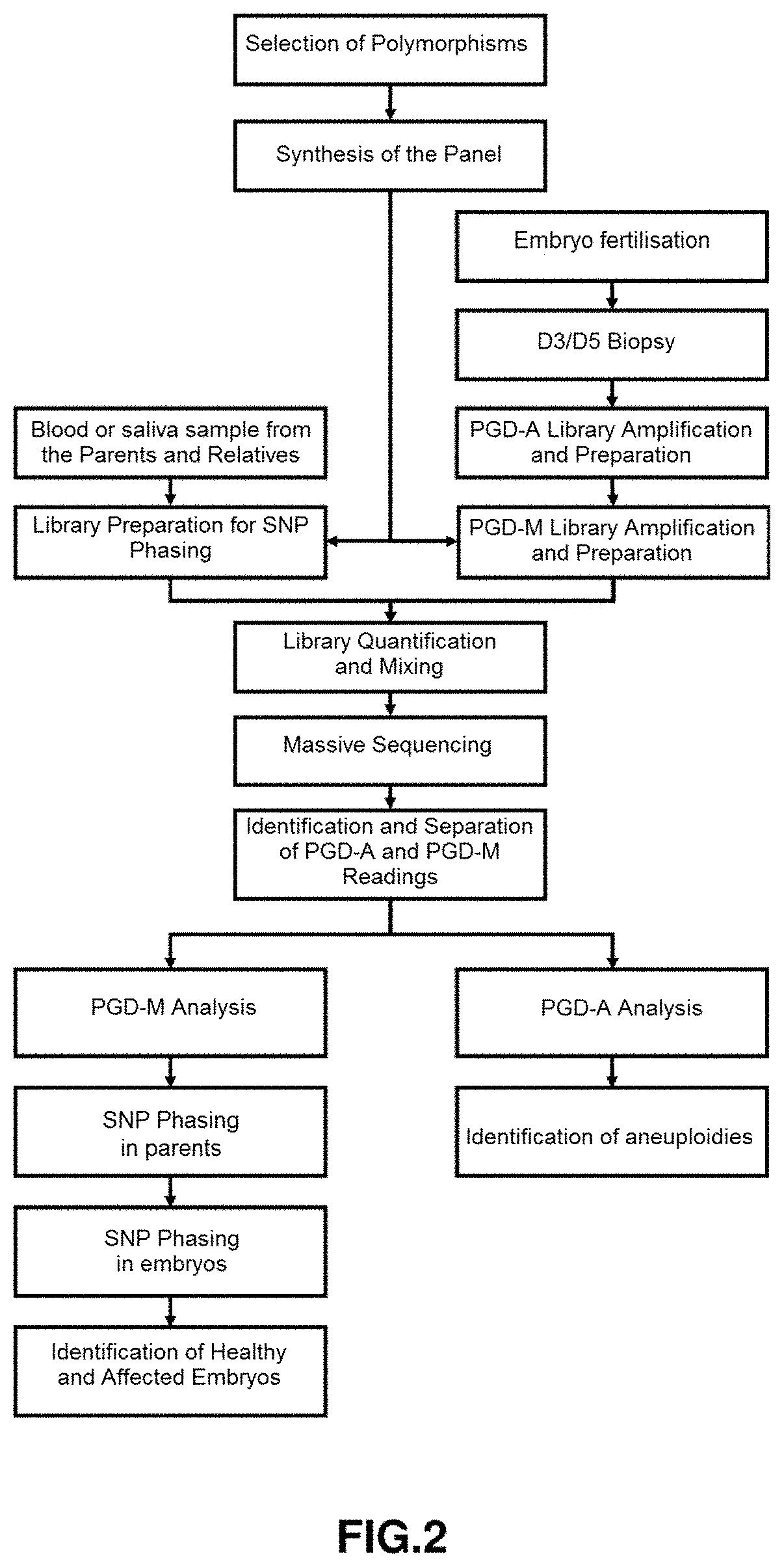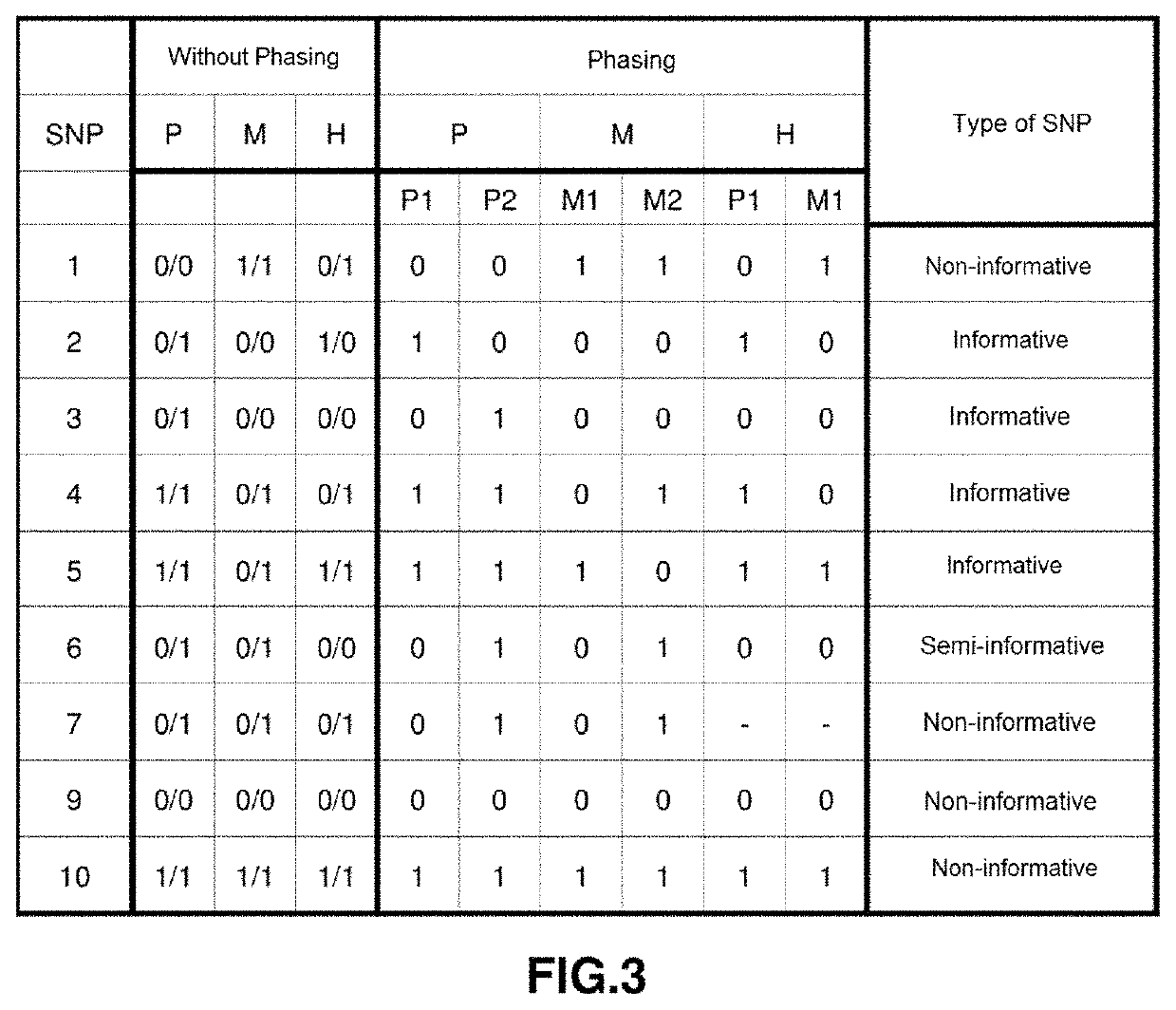Method for the Study of Embryo Mutations in IN VITRO Reproduction Processes
- Summary
- Abstract
- Description
- Claims
- Application Information
AI Technical Summary
Benefits of technology
Problems solved by technology
Method used
Image
Examples
example 1
Diagnosis of Aneuploidies
[0076]In FIG. 2 the complete outline for use in the diagnosis of aneuploidies is shown. It is considered a European population couple wherein a member of the couple is a carrier of the autosomal dominant pathogenic variant VHL:c.233A>G p.(Asn78Ser) (chromosomal position chr13:10183764) causing a condition known as Von Hippel-Lindau syndrome, which has an autosomal dominant mode of inheritance.
[0077]The input of the software will be the 69473 SNPs contained in the block-region chr13:9181319-11681319. The output of this algorithm will be a matrix M of 1625 candidate SNPs, which will act as input for the SNP selection algorithm, whose output will be a panel of 283 tagSNPs. In the validation phase, it was found that on average 49% of tagSNPs in the panel were informative.
[0078]Wet laboratory protocol. Once selected the polymorphisms that are to be sequenced, positions are entered into the corresponding enrichment platform. Preferably, Ion Ampliseq. This platform...
example 2
Identification of Triploid Embryos
[0090]Triploid embryos are a major problem in any IVF cycle. They account for 15% of miscarriages due to chromosomal abnormalities. Triploid embryos should always be discarded from any in vitro fertilisation cycle, but it is difficult to identify them because there are no differences in embryo quality with respect to normal embryos. Sometimes, it is possible to distinguish them because in D+1 three pronuclei are observed, but it is not always possible. The triploid embryos may be of a dyspermic origin (in cases of IVF) or be originated by an oocyte failure when the second polar corpuscle is not extruded.
[0091]Triploid embryos cannot be identified by ordinary PGD-A techniques, despite being a numerical anomaly. Sometimes, through visual inspection, it is possible to detect embryos 46, XXY when observing an abnormal distribution of the readings of the sex chromosomes, but it is not always possible and requires trained personnel.
[0092]The method herein...
example 3
Identification of Embryos with Balanced Translocations
[0093]Sometimes, some couples decide to undergo in vitro fertilisation cycles because one of them is a carrier of a balanced translocation. In these cases, these parents have a high reproductive risk, since 50% of their embryos will have an unbalanced translocation as a result of inheriting one of the altered chromosomes. Furthermore, there will be a 25% chance of producing completely normal embryos, and a 25% chance of producing embryos with the balanced alteration. FIG. 6 shows an outline of the possible embryos produced. Current techniques enable those embryos with unbalanced alterations to be distinguished, most of the time by simply using PGD-A. Nevertheless, it is not possible to differentiate those embryos with the balanced alteration from those that are completely normal, since there are no changes in copy number. Through the present development, it is possible to map the entire chromosome by different polymorphisms and, ...
PUM
| Property | Measurement | Unit |
|---|---|---|
| response time | aaaaa | aaaaa |
| length | aaaaa | aaaaa |
| minor allele frequency | aaaaa | aaaaa |
Abstract
Description
Claims
Application Information
 Login to View More
Login to View More - R&D
- Intellectual Property
- Life Sciences
- Materials
- Tech Scout
- Unparalleled Data Quality
- Higher Quality Content
- 60% Fewer Hallucinations
Browse by: Latest US Patents, China's latest patents, Technical Efficacy Thesaurus, Application Domain, Technology Topic, Popular Technical Reports.
© 2025 PatSnap. All rights reserved.Legal|Privacy policy|Modern Slavery Act Transparency Statement|Sitemap|About US| Contact US: help@patsnap.com



